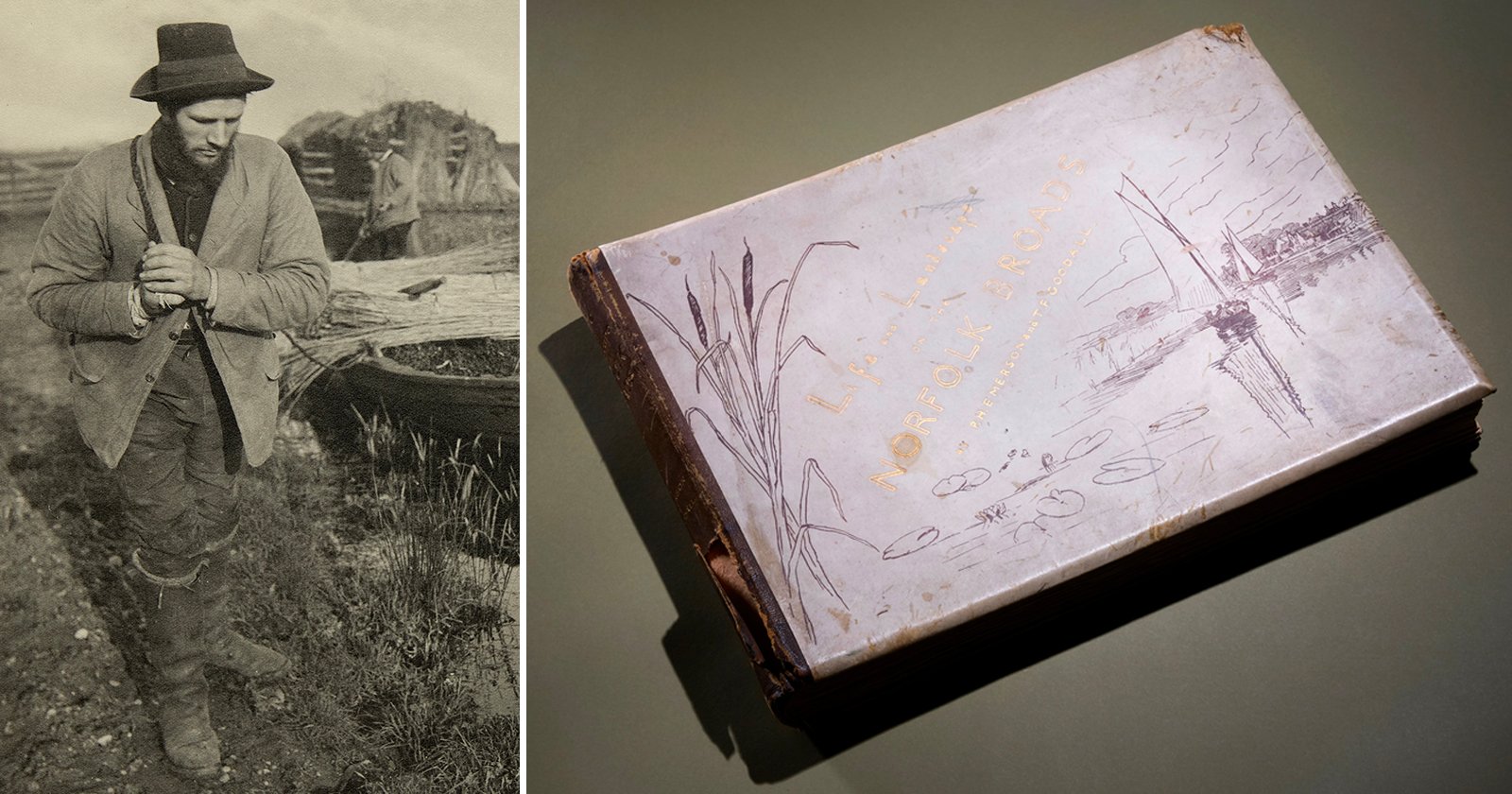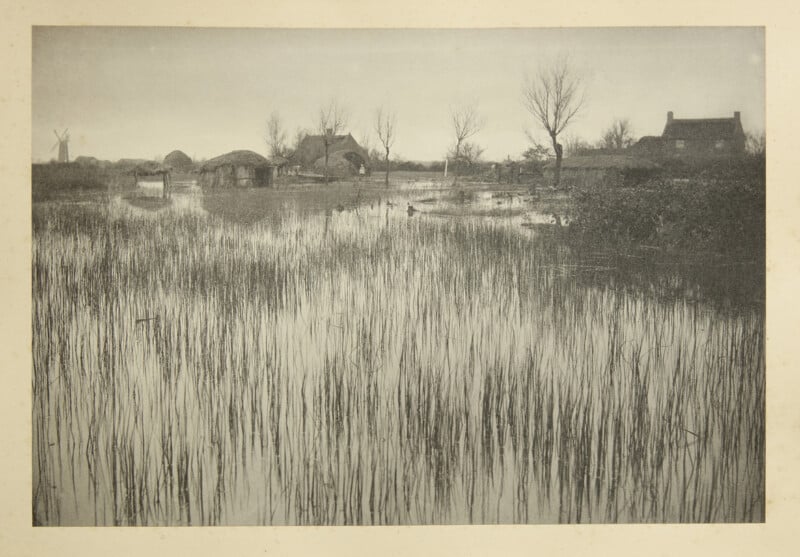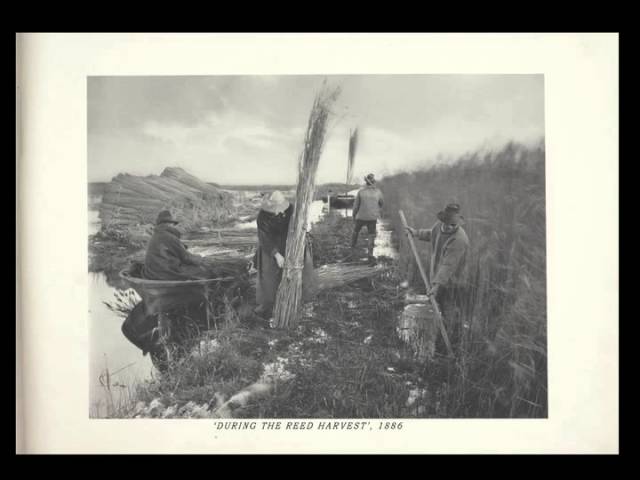‘World’s First’ Coffee Table Photo Book Found In Closet Could Fetch $70,000 at Auction

A rare and historically significant Emerson Victorian photobook, long forgotten in a Maryland closet, is set to go up for auction this week in London and is expected to fetch an estimated £50,000 (approximately $67,000).
The book, Life and Landscape on the Norfolk Broads by pioneering photographer Peter Henry Emerson, was found wrapped in brown paper by the 98-year-old owner’s family following a house clearance, and is believed to have been purchased at a yard sale years earlier.
As reported by Fine Books & Collections Magazine, the Emerson volume, one of only 25 deluxe first editions produced in 1886, will be offered at Roseberys’ Fine & Decorative Art sale on July 10 as Lot 142. The photobook is widely regarded as a milestone in the development of photography as a fine art; some have described it as the world’s first “coffee table” photography book.
A Seminal Work in Photographic History
Peter Henry Emerson, born in Cuba and later based in England, played a formative role in the evolution of photography during the late 19th century. Between 1885 and 1895, he photographed the rural landscapes and people of East Anglia, particularly the Norfolk Broads, with a style that blended realism and artistic composition. His images were paired with text and illustrations by British artist Thomas Frederick Goodall, resulting in an ambitious publication.

![]()
![]()
The deluxe edition being auctioned includes 40 original platinum prints mounted on India paper, each with protective tissue guards. The book is bound in brown roan-backed pictorial vellum with gilt decoration designed by Goodall. Notably, one of the prints bears a visible fingerprint believed to be Emerson’s, offering a tangible connection to the artist’s hand-crafted process.
“Emerson’s outstanding photographs depicting rural life in the Norfolk Broads are accompanied by the lyrical prose of Emerson and his friend, the artist Thomas Goodall. Emerson was an advocate for photography as a truthful, expressive art form grounded in naturalistic observation. Life and Landscape embodies this vision, blending documentary realism with artistic composition, and is a masterwork in the history of photography. The combination of text and platinum prints established photography as a medium capable of serious artistic and literary expression, and Emerson’s style had a profound influence on Alfred Stieglitz and generations of photographers since,” Roseberys’ listing describes.
![]()
![]()
Rarity Heightened by Emerson’s Own Hand
The scarcity of the volume is further underscored by Emerson’s own decision to destroy the printing plates shortly after publication, ensuring no further editions could be produced. As a result, complete deluxe copies in original condition are exceptionally rare and highly sought after by collectors and institutions.
Jack Wallis, Head of Sale and Fine & Decorative Art Specialist at Roseberys, described the discovery as “an incredibly rare and valuable thing to find.”
“Life and Landscape on the Norfolk Broads is a seminal work that established photography as a serious artistic medium. Peter Henry Emerson’s influence can still be seen today, from the work of Alfred Stieglitz to modern photographic practices,” Wallis says.
Negatives Destroyed After Printing
In 2012, the Getty Museum released a fascinating short documentary P.H. Emerson’s Naturalistic Photography on Peter Henry Emerson with his limited edition photobooks highlighted, in particular discussing Life and Landscape on the Norfolk Broads . Narrated by Emerson’s great grandson, Stephen Hyde, and produced in partnership with the National Museum of Photography, Film & Television, Bradford, England, The Estate of P.H. Emerson, and The J. Paul Getty Museum, the documentary gives context and further illustrates the historic significance of Emerson’s work.

“Right from the very start, Emerson was aware of the importance of limited editions and unlike many of his fellow photographers, he did see his photographs as high art and he wanted to preserve the artistic status of the photographs. Accordingly, he published the books in limited editions and then broke the negatives after he had printed the books,” narrator and great grandson of Emerson, Steven Hyde describes.
“He also really fell in love with the people of Norfolk. He liked them. He thought they were unpretentious, noble people doing a hard day’s work, often unrecognized. In his writings on them, he quite often used the vernacular language they spoke in. I do think that Emerson was to a certain extent idealizing the life of the worker and he believed very much in the integrity of the simple life of working the land, lack of sophistication, and simplicity. In fact in many of his books, he finds an honesty and a beauty in the lives of people who work the land.”
From Forgotten Closet to Fine Art Auction
The upcoming auction of Life and Landscape on the Norfolk Broads by Peter Henry Emerson has drawn attention from collectors, curators, and historians alike, all eager to see where this rediscovered volume will find its next home, and what it might fetch. For such a rare and historic a book that sat undisturbed in a closet for decades, its journey to the auction block highlights the continued relevance and value of early photographic art.
Image credits: Fine Books & Collections Magazine, Roseberys’ Fine & Decorative Art, Stephen Hyde, National Museum of Photography, Film & Television, Bradford, England, The Estate of P.H. Emerson, The J. Paul Getty Museum



